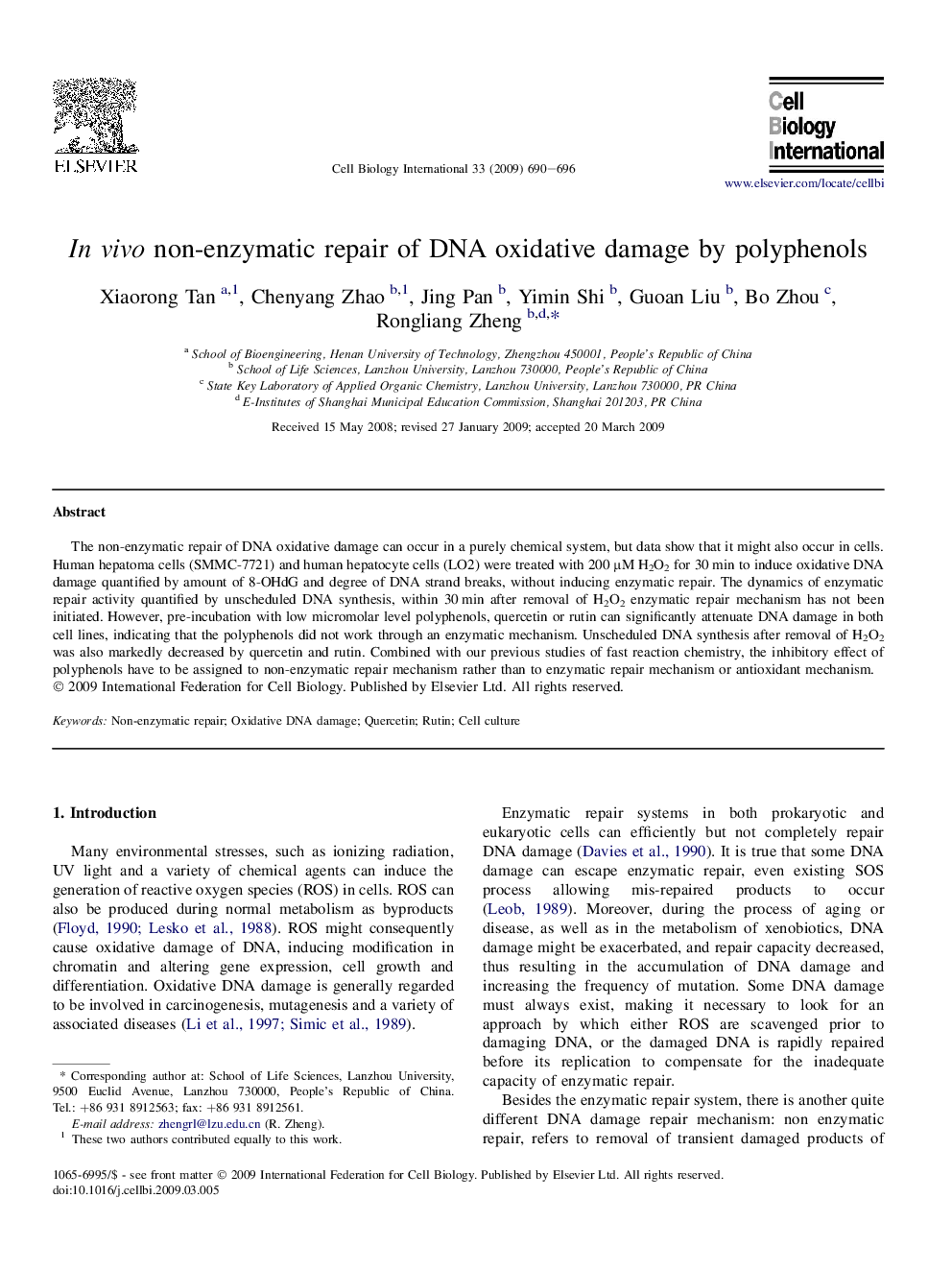| Article ID | Journal | Published Year | Pages | File Type |
|---|---|---|---|---|
| 2067113 | Cell Biology International | 2009 | 7 Pages |
Abstract
The non-enzymatic repair of DNA oxidative damage can occur in a purely chemical system, but data show that it might also occur in cells. Human hepatoma cells (SMMC-7721) and human hepatocyte cells (LO2) were treated with 200 μM H2O2 for 30 min to induce oxidative DNA damage quantified by amount of 8-OHdG and degree of DNA strand breaks, without inducing enzymatic repair. The dynamics of enzymatic repair activity quantified by unscheduled DNA synthesis, within 30 min after removal of H2O2 enzymatic repair mechanism has not been initiated. However, pre-incubation with low micromolar level polyphenols, quercetin or rutin can significantly attenuate DNA damage in both cell lines, indicating that the polyphenols did not work through an enzymatic mechanism. Unscheduled DNA synthesis after removal of H2O2 was also markedly decreased by quercetin and rutin. Combined with our previous studies of fast reaction chemistry, the inhibitory effect of polyphenols have to be assigned to non-enzymatic repair mechanism rather than to enzymatic repair mechanism or antioxidant mechanism.
Related Topics
Life Sciences
Biochemistry, Genetics and Molecular Biology
Biophysics
Authors
Xiaorong Tan, Chenyang Zhao, Jing Pan, Yimin Shi, Guoan Liu, Bo Zhou, Rongliang Zheng,
